 Verbatim Store 'n' Go SuperSpeed USB 3.0 Portable Hard Drive
Verbatim Store 'n' Go SuperSpeed USB 3.0 Portable Hard Drive
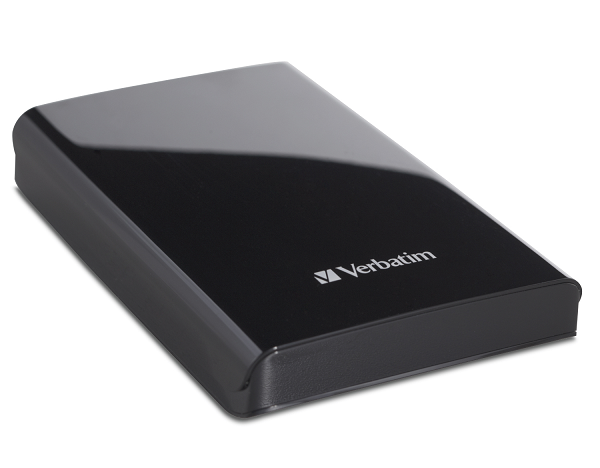
Product Category: Portable Disk DriveWhere to Buy: Amazon [Affiliate]Price: $75.24 USDSystem Requirements: USB 3.0 portSpecifications: Available in 500GB, 750GB, and 1TB capacities. Size 121mm x 80mm x 15mm. Weight: 115g. Supplied cable: 62cm.Pros: - Small and light.
- Good value.
- Great warranty (seven years)
Cons: - Not close to "transfer speed up to 10x faster than USB 2.0"
- Supplied cable is rather short.
Summary: At last, USB 3.0 devices are becoming widely available and at prices close to 2.0 disks. With transfer rates theoretically 10X as fast as USB 2.0, should you consider a USB 3.0 disk for backups and data transfer? Yes, but don't get your hopes too high. Your backups won't be going 10 times faster. Do You Need a USB 3.0 Portable Drive?Removable disk storage is all about convenience—both speed and ease of use. Whether you are moving large media files from one system to another or making image backups or archiving your music and video collection, speed and ease-of-use are paramount. This is not a fun chore! Many choices of portable disks with USB and/or Firewire interfaces have been available for a long time. But Firewire needs a power supply, and some of the USB 2.0 disks need a second USB connection or an external power supply to get enough juice. Usually that isn’t a problem but it just makes the backup or copying that much more inconvenient. Now comes the SuperSpeed USB 3.0 interface specification, which was completed in 2008. With a maximum transfer rate of 5GB/s, or over 10 times the USB 2.0 rate 480 MB/s, and full duplex (can transfer data in both directions at the same time), it is what a lot of computer users have been waiting for. But it has taken a while for products to come to market, with the first ones showing up around January 2010. Motherboard makers have also been slow to put USB 3.0 chipsets in their products, but now the ports are becoming common on new laptops and desktops. SuperSpeed USB 3.0 is “plug-compatible” with 2.0, meaning you can plug a 2.0 device into a 3.0 port and vice versa. But there are actually 5 more pins in a 3.0 plug that only come in contact with a 3.0 jack, and so you need a 3.0 cable for the high speed. Just like plugging a USB 2.0 device into a 1.1 port, you’ll get a message telling you the device would run faster on a SuperSpeed USB 3.0 device when you plug it into a 2.0 port. Other than a blue plastic tab in the end of plug instead of the usual white, and a thicker cable, they look the same (Figure 1). Yes, you still have a 50/50 chance of orienting the plug the right way. I seem to have a knack for trying the wrong way 85% of the time; I'd like to know who has my other 35%. 
Figure 1. USB 3.0 connectors (left 2) and USB 2.0 (right two). See also this diagram. So do you need USB 3.0 disk drive? Of course you do! First LookThis disk drive is packaged in an appropriately sized retail box that is easily opened to reveal a corrugated cardboard insert (Figure 2). Thankfully, there is no excessive hard plastic or foam, just cardboard configured in a way to support the drive away from the exterior. The drive, a short cable, and a small instruction booklet are securely placed inside. 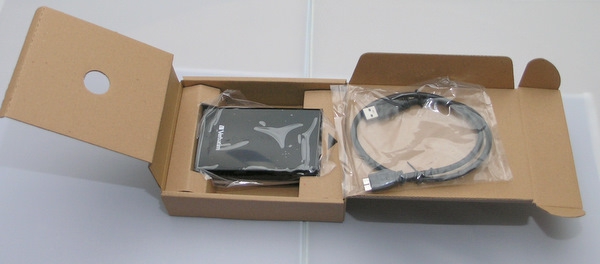
Figure 2: Modest, eco-friendly packaging is easy to open. It is a good-looking, compact, shiny black device (Figure 3). It feels fairly solid for plastic. In just a few minutes, it is covered with my finger prints, but I’m resigned to frequently wiping off my many glossy black devices and have micro-fiber clothes everywhere, so that doesn't bother me much. 
Figure 3: The Verbatim Store 'n' Go SuperSpeed USB 3.0 is only about 50% larger than a smart phone, so it is easy to take your media files or backups wherever you go. [Photo courtesy of Verbatim] The drive-end if the cable is a Type-B USB 3.0 connector - that's the second one from the left in Figure 1. It is a bit difficult to insert. I plugged the other end it into my laptop’s 2.0 port to take a quick look; it came right on and Windows 7 did not need to find a driver, or found one on it's own without bothering me. There is a single blue LED that is on steadily when there is power, and blinks when the drive is accessed. It is behind the semi-transparent end of the case which makes the light very diffuse, making me think I forgot to put my glasses on. It is on the end with the cable, which make sense when it is being used with a laptop, but when plugged into the back of a desktop with the very short cable, the disk cannot be positioned in a way that the activity light is visible. On top would have been better. The supplied software is on the disk rather than a CD. You better make a backup of those before using the disk - I don't see the software available for download from Verbatim. Files include a PDF user’s guide, Nero “BackItUp & Burn Essentials”, a "Norton Online Backup" installer, and some kind of “Formatter” utility. It is formatted FAT32, I guess so Mac’s can read it, but you may wish to reformat it as NTFS when you copy the software off it. More about the software later.
Side Note on Add-In AdaptersMany new computers have USB 3.0 built in; soon all will. Until then, a number of inexpensive add-in PCI Express adapters are available. For laptops, there is at least one ExpressCard adapter at about $35; to me, that would be more awkward and expensive than the value. But for a desktop or tower system a PCI Express card is reasonable. I obtained a StarTech PEXUSB3S2, about $30, then saw a Syba SD-PEX20047 on MeritLine for $15, so I have two to compare. They are about the same, except the StarTech included a half-height bracket, which would be important if your computer took only half-height cards. I was surprised both had an internal L4 molex power connector. The StarTech instructions said to simply connect this to your computer's internal power supply, but mine has none. The Syba instructions said this is optional for devices needing more power (and implied a Y-connect was supplied; it was not). On starting, Windows 7 did not find a driver for the Syba card, but one was easily installed from the provided mini-CD . . . after (reluctantly) reading the printed instructions to find it. I tried the benchmark programs described below on both adapters, and did not find any differences, so only the results for the Syba card are shown. If you go this route, buy an extension cable so you don't drive yourself nuts reaching around to the back of computer to find the ports. I saw a 3ft "Type A male/female" one for $2 online ($6 shipping). Get a blue one so you can keep it separate from your USB 2.0 cables. Speed Tests -- Let the Race Begin!Benchmark MethodsTo get a good idea of the relative performance of USB 3.0 vs. 2.0, and of the Verbatim disk, I used two disk benchmark programs, devised some file copy tests and did several disk image backups. A summary of these methods is: - ATTO Disk BenchMark. The default options were used (particularly Direct I/O).
- CrystalDiskMark (version 3.0.1). Reports sequential and random reads and writes, and takes a long time to run, so it must be good (:-)). The default settings of 5 runs for each test and a test size of 1000MB were used.
- Small File Copy: to test copying many small files, a subset of photos was copied to and from the target disk with the ROBOCOPY command. The data consisted of 6,341 files in 218 folders for a total of 6.42 GB. This replicates a common task I do often to mirror media files between systems and make backups to store elsewhere. To test reading and writing at the same time, which is something USB 3.0 can do but 2.0 cannot, the same files were written to a second location on the target disk while a second process was launched to read the first copy from the target disk to a different drive on the test computer. I’m not sure how often you will do something like this in real life, but since USB 3.0 is full duplex I thought it would be an interesting test. These tests were repeated 3 times and the average times calculated, then converted to MB/s. The system’s file cache of 2GB is much less than the amount of data copied, and copying was to and from a different location than the previous run, so caching effects should have been minimal.
- Large File Copy: here two HD recordings, one 3.90GB and one 7.94 GB were copied to and from the target disk. This is also something real-world and a common thing to do, such as when my little brother was on CNN recently and I wanted to cut the segment out of the 2 hour WTV recording made on my media center (hey, I have to brag about it . . . plus I really do wish I had had a USB 3.0 device when I moved the file!)
- Image backup: Macrium Reflect Free Edition was used to make a backup image of the test computer’s C: drive. This is something I do often. On this test system the C: drive is pretty large because there are other things besides the OS, and the resulting image file was about 63GB.
All reported tests were done on a modest Dell Inspiron 518 with a Pentium E2220 with 2 cores at 2.4GHz and 3GB of memory running Windows 7 Ultimate (32bit). The ATTO and CrystalDiskMark were also run on the Verbatim disk drive connected to a high-end workstation, to see if the small memory, low-end CPU, and 32-bit-ness of the test system made any difference; no difference was seen. Comparison DevicesHere at the Thoughts Media Product Testing Center Annex #42, we don’t have many USB 3.0 devices to compare with the Verbatim drive. I like to use old internal SATA disks in a docking station for backups, and one day Meritline had a special on a MyGica USB 3.0 SATA docking station for $20 which was too good to pass up. I put a Western Digital 10,000RPM 80 GB SATA drive in that to use for testing. Besides that, I borrowed a Super-Talent USB 3.0 Express DUO 16GB flash drive (about $30), and also compared some USB 2.0 devices, in particular a trusty old Pocketec DataStor SATA USB 2.0 180GB disk that at one time was one of the fastest portable disks available. So these comparison don’t tell us how the Verbatim disk drive fairs against direct competitors, but they are still informative in helping you decide if a USB 3.0 portable disk drive is worth investing in, and, in general, what to expect with USB 3.0.
ResultsATTO Disk Benchmark Figure 4 shows the results from the ATTO Disk Benchmarks, where I wanted to see if there was any difference between the two PCIx cards and between FAT32 and NTFS formatting. There was no performance difference between the StarTech and Syba card, so in further tests the Syba was always used. I then formatted the Verbatim disk as an NTFS file system (unchecking the “Quick Format” option); this took a long time, but that’s not surprising for 500GB. 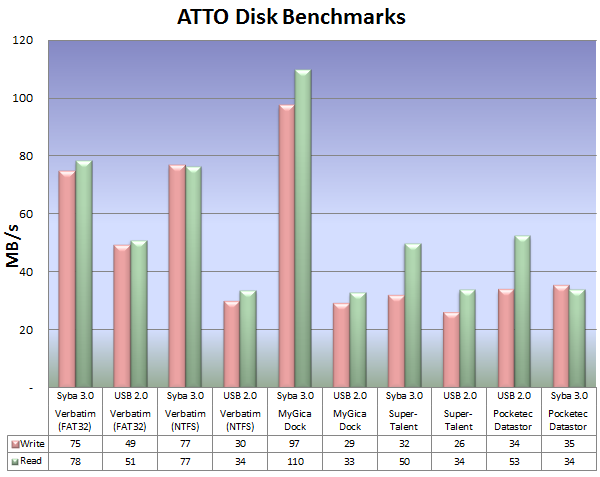
Figure 4. ATTO Disk Benchmark Results comparing FAT32 vs. NTFS formats, and some USB 2.0 devices. There were some interesting things from this first round of benchmarks: - The Verbatim disk drive did better when connected to a USB 2.0 port when formatted as FAT32 than NTFS, so maybe you should leave it formatted as FAT32 if you will use it with 2.0 ports often.
- USB 3.0 sure doesn't look like it is going to 10x faster than 2.0.
- The MyGica SATA dock really took a hit when connected to a 2.0 port; the Verbatim faired better in that it ran the same as the dock whereas it wasn't as fast on the 3.0 port.
- A USB 3.0 flash drive, like that Super-Talent, can be very slow to write to.
So there are some puzzling things there. Let's move on. CrystalDiskMark BenchmarksThis program does 4 kinds of tests: - Seq : Sequential Read/Write Test (Block Size = 1024KB)
- 512K : Random Read/Write Test (Block Size = 512KB)
- 4K : Random Read/Write Test (Block Size = 4KB)
- 4K QD32 : Random Read/Write Test (Block Size = 4KB, Queue Depth = 32)
I, frankly, don't quite understand the implications of the 3 different random tests, which are labeled R1, R2, and R3 in the chart in Figure 5, but the numbers sure came out differently. 
Figure 5. CrystalDiskMark results for the test devices. Now things are getting interesting. The SATA dock does much better than the Verbatim disk for all the tests, but both are "off the chart" for most of the random tests. Why the R1 write was OK I don't know, but I checked the results and re-ran the tests. Because the Super-Talent 3.0 flash drive behaved so much differently in the ATTO benchmark, I added a Verbatim 16GB flash drive to the mix. Note how slow the R2 Write and R3 Write test were for both flash drives. I'm still not seeing anything close to 10X USB 2.0 but, enough benchmarks, let's move on to some real-world tests. Small File Copy TestsIn this test, the files were first copied to the target disk to have a set for the read test, then copied again to a different directory. The first set was then read back to a different disk on the test computer. So there would be some effect from the OS file cache as well as hardware cache, but each run was repeated 3 times and done exactly the same way for each device. The numbers were close across each run. This took hours and hours, by the way. Let's take a look at Figure 6. The "S-Write" and "S-Read" columns are where two process were started at the same time, one writing to the device and one reading from it (both to and from different directories). 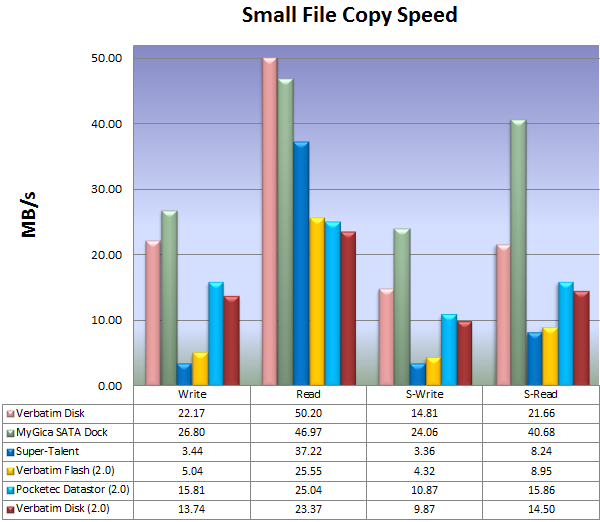
Figure 6. Small File Copy results for writing and reading 6,000 photos, and doing the write and read at the same times (S-Write and S-Read). Now the Verbatim disk is looking better against the SATA dock, and it is even a little faster when reading. But it falls short in the simultaneous read and write, where the read speed falls to nearly half the speed of the SATA dock. I suspect this is due to the nature of the disk hardware. The SATA dock had a relatively large and heavy 2.5" disk drive with an external power supply and running at 10,000 rpm. It probably has much better seek times and internal transfer rates that the low power and light-weight drive inside the Verbatim. Some more interesting things: - Write is 10 times slower to the Super-Talent than reading, but "only" 5 times slower with the Verbatim 2.0 flash drive. Reading during the slow writing doesn't seem to make the writing much worse.
- The Verbatim disk, when plugged into a 2.0 port, does as well as the Pocketec Datastor, so if some of your computers still have 2.0 ports, you won't be penalized for using this 3.0 disk.
- The full-duplex ability of the USB 3.0 connection seems only useful if the disk hardware can keep up.
But it still doesn't look like USB 3.0 is going to be 10 times as fast as 2.0. Maybe twice as fast for reading, on a good day. But a couple more tests are in order, even though I promised the review would be done last week. Large File Copy and Image BackupThe results from copying the two large HDTV files (3.9GB and 7.94GB) and the Macrium image backup are combined in the chart in Figure 7. The file copies were done in a way similar to the small file copy, repeated 3 times, etc., but the image backup was done only once per device because it was time consuming. 
Figure 7. Large file (1=3.9GB, 2=7.94GB) and Image Backup results. Here the MyGica SATA Dock edges out the Verbatim disk drive a little bit, but now we really see some fast speeds, with the reads of the 3.9GB file exceeding 120MB/s. I didn't believe the "Read 1" numbers so I repeated the tests the next day and in a different order and the times came out identical, and I don't know why the Pocketec on the 2.0 port did better in "Read 1" than the Verbatim on the same port when their write speeds were identical. Still nothing close to the advertised transfer rate of 480MB/s, but "transfer rate" doesn't necessarily mean "how fast it will actually backup or copy data". What we can say is the Verbatim SuperSpeed USB 3.0 Store'n'Go disk keeps up with a much larger, bulkier, and uglier SATA disk in a dock and, on average, is going to move your data about twice as fast as a USB 2.0 disk drive.
Included SoftwareLastly, let's take a quick look at the software included on the disk. These things are usually worth what you paid for them, but I suppose they do help sell the product in a retail setting. Verbatim Hard Drive FormatterI'm not sure what this is for. After installation the installer could not launch the program ("requires elevated privileges") but it did run by launching the desktop icon. Then it said a newer version of Adobe Flash Player for Internet Explorer was required. What? Groan. Well, OK. The program finds your Verbatim disk and gives you the choice of NTFS for FAT32, then it does a quick format. I'm not sure what use this is, other than it is slightly easier to use than the Windows 7 formatting utility. Nero BackItUp & Burn EssentialsI installed the Nero software next (again, you'd be out of luck if you ran the formatter from the disk first!) The installer says it requires a reboot...grr! On restart, several more things were installed, plus...what a surprise...a free browser toolbar! How delightful! The program actually looks pretty good (Figure 8) and has functions to backup files and drives manually or automatically, synchronize files, and create an image recovery disk. It also offers encryption options, which is a very good thing for portable media. 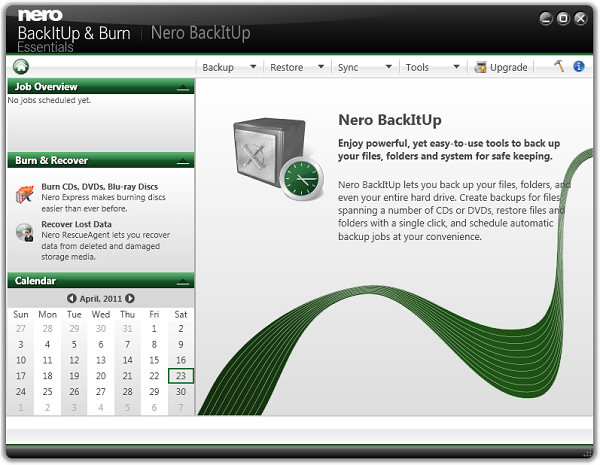
Figure 8. Nero BackItUp & Burn Essentials is fairly easy to use and comprehensive, and you even have the opportunity to pay for an upgrade to a better version. I ran the drive backup on the test computer's C: drive, which is a similar task to the Macrium image backup benchmarked above. Macrium took about 22 minutes and made a 63GB file. The Nero tool took an incredible 2 hours and 39 minutes and made 41 files taking up 70.5GB. Unlike Macrium image files, you cannot restore individual files from the drive backup. It does support encryption while the Macrium Free Edition does not, but you can use BitLocker to secure removable disk drives if your version of Windows 7 includes that feature. Due to the glacial speed if the image backup, I was not inspired to look at other features in Nero BackItUp Essentials at this time. Norton Online BackupThe disk drive includes a free trial of Norton Online Backup, one of many backup services that store your data for you. If you feel you really should have a copy of your irreplaceable media such as family photos and videos stored outside your house - and you should - an online service is an attractive option. However, most home Internet connections have rather slow upload speeds, and some have limits on total uploads and downloads. The basic Norton Online service is $50 for "1 year protection for up to 5 PCs", and a limit of 25GB. That might be enough for most households' pictures and documents, but adding music and home videos would easily exceed that. Additional storage has been reported at an additional $50 for 10GB and $240 for 100GB. Dropbox is similar at $20/month for 100GB. For that kind of money you could have 3 or 4 Verbatim 500GB disk drives . . . but you'll still have to remember to routinely take one to a remote location for safe keeping. The free 60-day trial includes 5GB of space. Launching the provided "Norton Online Backup.exe" simply sends you to their download page where you can download the real installer (5MB). The application is all browser based. I accepted the defaults (various file types in my C:UsersChris folder) and added my large C:mediapicturesphotos directory. It was quick to calculate the total number of files (7239) and size (6.07GB) and tell me it was too large. I removed the photos directory and it recalculated 1227 files and 51.26MB. I then selected "Manual (Use Back Up Now only") under the "When" tab. Once I found the Back Up Now button, it took about 4 minutes. The common usage would be to schedule that for night time. You can schedule an approximate time and it picks the exact time, so now I have one scheduled for daily at 3am. It would be interesting to see if I'm not logged on, or if the computer is asleep, whether the backup runs or not. Regardless, this kind of "trial ware" is not much of a reason to buy the Verbatim disk; anyone can download the Norton Online Backup 60-day trial. ConclusionIf you need a small, light portable disk drive for backups or moving files, a Verbatim Store'N'Go SuperSpeed USB 3.0 is a good choice, even if you don't have USB 3.0 ports in any of your computers now. With an amazing 7 year warranty, you would have this disk for a long time and would no doubt have USB 3.0 in the near future. But don't expect 10 times the speed of a USB 2.0 disk drive; count on about twice as fast. Maybe the "10" in "10x" on the package is binary! The USB 3.0 protocol will be with us for a long time, and backup speeds will pick up as disk drives, memory, bus speeds, and processor speeds all get faster. Chris Sacksteder is a systems developer living in central Pennsylvania. Hobbies include keeping automatic commercial skipping working on Windows 7 Media Center and doing backups, lots of backups, of the numerous computers in the house. 
Do you enjoy using new hardware, software and accessories, then sharing your experience with others? Then join us on the Thoughts Media Review Team! We're looking for individuals who find it fun to test new gear and give their honest opinions about the experience. It's a volunteer role with some great perks. Interested? Then click here for more information. 
|